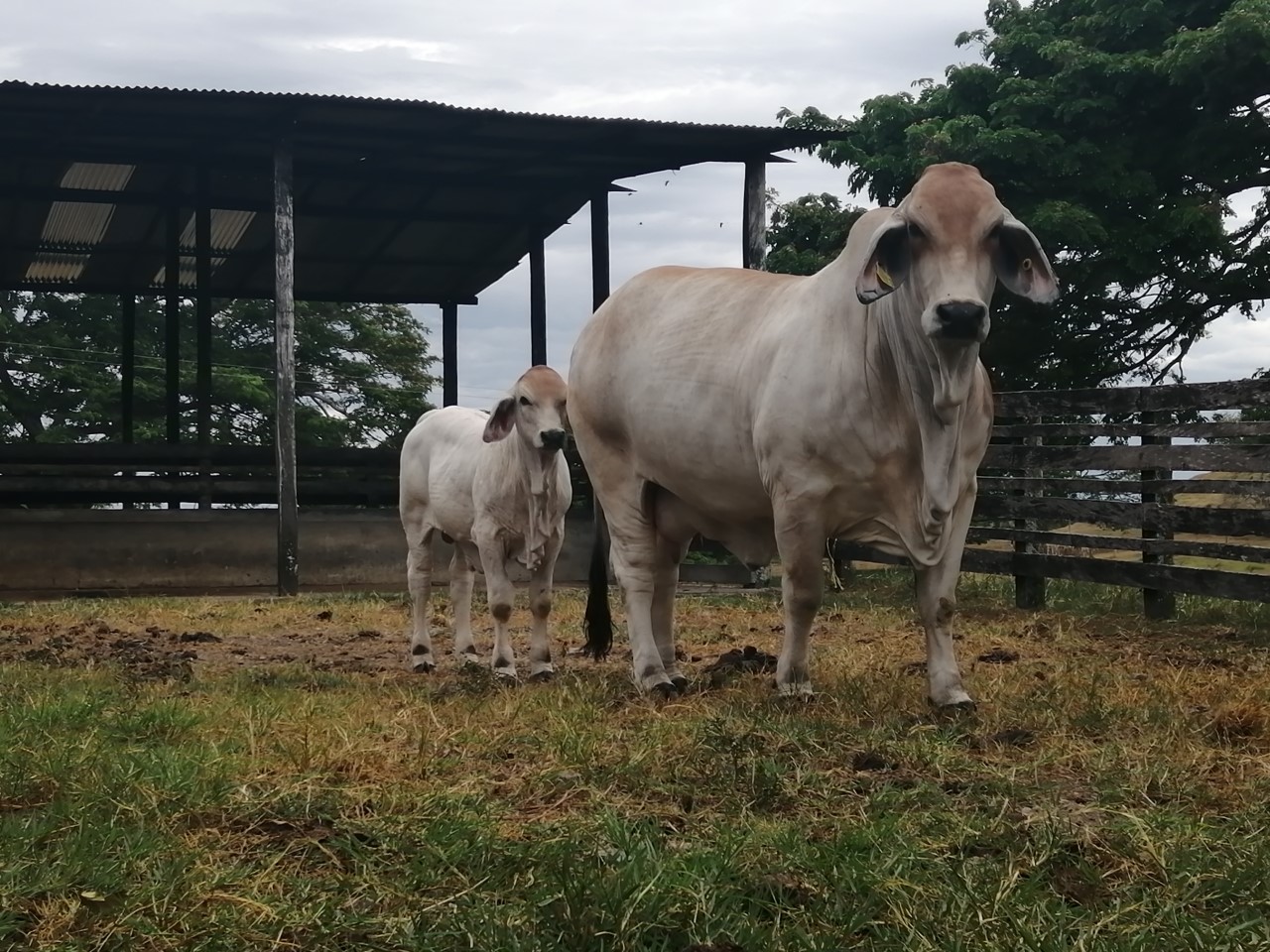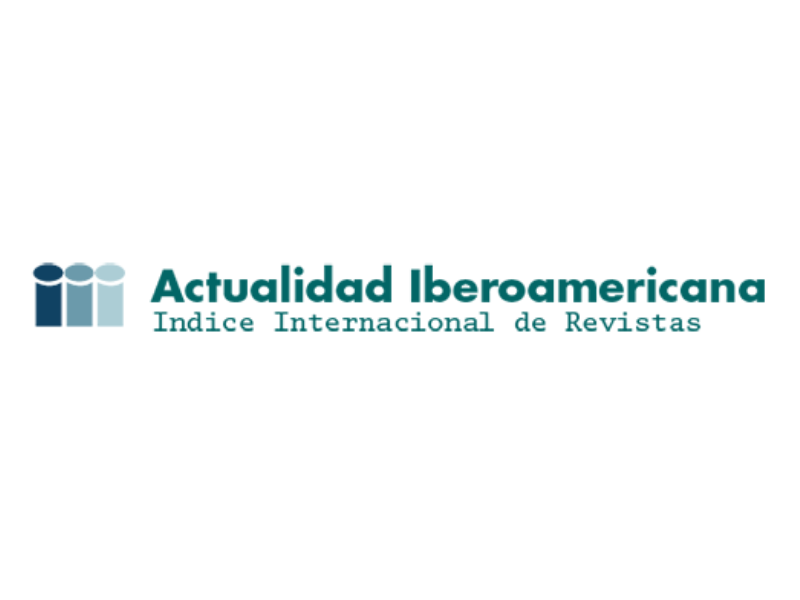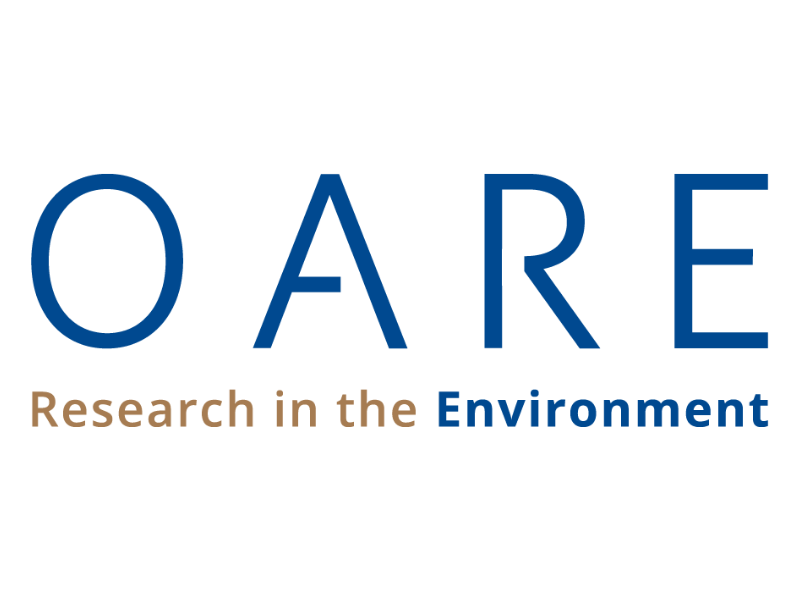Concentración sérica de la hormona anti-Mülleriana y su relación con la reserva ovárica en vacas Brahman donantes de ovocitos
Serum concentration of anti-Müllerian hormone and its relationship with ovarian reserve in Brahman oocyte donors


Esta obra está bajo una licencia internacional Creative Commons Atribución-NoComercial-CompartirIgual 4.0.
Mostrar biografía de los autores
Objetivo. Evaluar la relación de la concentración sanguínea de AMH con el recuento folicular ovárico y la producción in vitro de embriones en hembras bovinas de la raza Brahman. Materiales y métodos. Para estandarizar la técnica de cuantificación de AMH se realizó un primer experimento, en el cual se tomaron muestras de sangre de 10 hembras Brahman sincronizadas en su celo, en tres días diferentes del ciclo estral, con más de 90 días posparto y con evaluación reproductiva normal. La concentración sérica de AMH se determinó con un kit inmunoenzimático comercial. Una vez estandarizada la técnica, se realizó un segundo experimento, se tomaron muestras de sangre de 100 donantes Brahman de ovocitos no sincronizadas, se realizó una sesión de aspiración folicular para la producción in vitro de embriones y se registró el número de folículos mayores de 2 mm en los dos ovarios. Resultados. No hubo diferencias en la concentración de AMH entre los días evaluados del ciclo estral y se encontró una correlación de 0,82 (p<0.001) entre la población de folículos antrales (PFA) y la concentración de AMH. La concentración sérica de AMH osciló entre 0.02 y 2.69 ng/ml. Además, se encontró una correlación de 0.73 (p<0.001) entre AMH y AFP y 0.54 entre AMH y el porcentaje de blastocistos producidos. Conclusiones. La AMH se puede utilizar como un marcador endocrino satisfactorio de la predicción de la reserva ovárica para la producción de embriones in vitro en ganado Brahman.
Visitas del artículo 563 | Visitas PDF
Descargas
- Morotti F, Sanches BV, Pontes JHF, Basso AC, Siqueira ER, Lisboa LA, et al. Pregnancy rate and birth rate of calves from a large-scale IVF program using reverse-sorted semen in Bos indicus, Bos indicus-taurus, and Bos taurus cattle. Theriogenology. 2014; 81(5):696–701. https://doi.org/10.1016/j.theriogenology.2013.12.002
- Pontes JHF, Melo FA, Basso AC, Ferreira CR, Sanches BV, Rubin KCP, et al. Ovum pick up, in vitro embryo production, and pregnancy rates from a large-scale commercial program using Nelore cattle (Bos indicus) donors. Theriogenology. 2011; 75(9):1640–1646. https://doi.org/10.1016/j.theriogenology.2010.12.026
- Ireland J, Ward F, Jimenez-Krassel F, Ireland JLH, Smith GW, Lonergan P, et al. Follicle numbers are highly repeatable within individual animals but are inversely correlated with FSH concentrations and the proportion of good-quality embryos after ovarian stimulation in cattle. Hum Reprod. 2007; 22(6):1687–1695. https://doi.org/10.1093/humrep/dem071
- Burns DS, Jimenez-Krassel F, Ireland JLH, Knight PG, Ireland JJ. Numbers of Antral Follicles During Follicular Waves in Cattle: Evidence for High Variation Among Animals, Very High Repeatability in Individuals, and an Inverse Association with Serum Follicle-Stimulating Hormone Concentrations. Biol Reprod. 2005; 73(1):54–62. https://doi.org/10.1095/biolreprod.104.036277
- Block E. Quantitative morphological investigation of the system in women. Acta Anat. 1952; 14(1–2):108–123. https://doi.org/10.1159/000140595
- Scaramuzzi RJ, Baird DT, Campbell BK, Driancourt M-A, Dupont J, Fortune JE, et al. Regulation of folliculogenesis and the determination of ovulation rate in ruminants. Reprod Fertil Dev. 2011; 23(3):444-467. https://doi.org/10.1071/RD09161
- Durlinger AL, Kramer P, Karels B, de Jong FH, Uilenbroek JT, Grootegoed JA, et al. Control of primordial follicle recruitment by anti-Müllerian hormone in the mouse ovary. Endocrinology. 1999; 140(12):5789–5796. https://doi.org/10.1210/endo.140.12.7204
- Bezard J, Vigier B, Tran D, Mauleon P, Josso N. Immunocytochemical study of anti-Mullerian hormone in sheep ovarian follicles during fetal and post-natal development. Reproduction. 1987; 80(2):509–516. https://doi.org/10.1530/jrf.0.0800509
- La Marca A, Volpe A. Anti-Mullerian hormone (AMH) in female reproduction: is measurement of circulating AMH a useful tool? Clin Endocrinol. 2006; 64(6):603–610. https://doi.org/10.1111/j.1365-2265.2006.02533.x
- Vigier B, Picard J-Y, Tran D, Legeai L, Josso N. Production of Anti-Müllerian Hormone: Another Homology between Sertoli and Granulosa Cells. Endocrinology. 1984; 114(4):1315–1320. https://doi.org/10.1210/endo-114-4-1315
- Hayes E, Kushnir V, Ma X, Biswas A, Prizant H, Gleicher N, et al. Intra-cellular mechanism of Anti-Müllerian hormone (AMH) in regulation of follicular development. Mol Cell Endocrinol. 2016; 433:56–65. https://doi.org/10.1016/j.mce.2016.05.019
- Ueno S, Kuroda T, Maclaughlin DT, Ragin RC, Manganaro TF, Donahoe PK. Mullerian Inhibiting Substance in the Adult Rat Ovary During Various Stages of the Estrous Cycle. Endocrinology. 1989; 125(2):1060–1066. https://doi.org/10.1210/endo-125-2-1060
- Weenen C, Laven JSE, Von Bergh ARM, Cranfield M, Groome NP, Visser JA, et al. Anti-Müllerian hormone expression pattern in the human ovary: potential implications for initial and cyclic follicle recruitment. Mol Hum Reprod. 2004;10(2):77–83. https://doi.org/10.1093/molehr/gah015
- Monniaux D, Barbey S, Rico C, Fabre S, Gallard Y, Larroque H. Anti-Müllerian hormone: a predictive marker of embryo production in cattle? Reprod Fertil Dev. 2010; 22(7):1083-1091. https://doi.org/10.1071/RD09279
- Veiga-Lopez A, Ye W, Padmanabhan V. Developmental programming: prenatal testosterone excess disrupts anti-Müllerian hormone expression in preantral and antral follicles. Fertil Steril. 2012; 97(3):748–756. https://doi.org/10.1016/j.fertnstert.2011.12.028
- Kim JH, Seibel MM, MacLaughlin DT, Donahoe PK, Ransil BJ, Hametz PA, et al. The inhibitory effects of müllerian-inhibiting substance on epidermal growth factor induced proliferation and progesterone production of human granulosa-luteal cells. J Clin Endocrinol Metab. 1992; 75(3):911–917. https://doi.org/10.1210/jcem.75.3.1517385
- Monniaux D, Drouilhet L, Rico C, Estienne A, Jarrier P, Touzé J-L, et al. Regulation of anti-Müllerian hormone production in domestic animals. Reprod Fertil Dev. 2013; 25(1):1-16. https://doi.org/10.1071/RD12270
- Rico C, Fabre S, Medigue C, Clemente ND., Clement F, Bontoux M, et al. Anti-Mullerian Hormone Is an Endocrine Marker of Ovarian Gonadotropin-Responsive Follicles and Can Help to Predict Superovulatory Responses in the Cow. Biol Reprod. 2009; 80(1):50–59. https://doi.org/10.1095/biolreprod.108.072157
- Baldrighi J, Sá Filho M, Batista E, Lopes R, Visintin J, Baruselli P, et al. Anti-Mullerian Hormone Concentration and Antral Ovarian Follicle Population in Murrah Heifers Compared to Holstein and Gyr Kept Under the Same Management. Reprod Domest Anim. 2014; 49(6):1015–1020. https://doi.org/10.1111/rda.12430
- Batista E, Macedo G, Sala R, Ortolan M, Sá Filho M, Del Valle T, et al. Plasma Antimullerian Hormone as a Predictor of Ovarian Antral Follicular Population in Bos indicus (Nelore) and Bos taurus (Holstein) Heifers. Reprod Domest Anim. 2014; 49(3):448–452. https://doi.org/10.1111/rda.12304
- Ireland JJ, Smith GW, Scheetz D, Jimenez-Krassel F, Folger JK, Ireland JLH, et al. Does size matter in females? An overview of the impact of the high variation in the ovarian reserve on ovarian function and fertility, utility of anti-Müllerian hormone as a diagnostic marker for fertility and causes of variation in the ovarian reserve in. Reprod Fertil Dev. 2011; 23(1):1-14. https://doi.org/10.1071/RD10226
- Pfeiffer KE, Jury LJ, Larson JE. Determination of anti-Müllerian hormone at estrus during a synchronized and a natural bovine estrous cycle. Domest Anim Endocrinol. 2014; 46(1):58–64. https://doi.org/10.1016/j.domaniend.2013.05.004
- Ribeiro ES, Bisinotto RS, Lima FS, Greco LF, Morrison A, Kumar A, et al. Plasma anti-Müllerian hormone in adult dairy cows and associations with fertility. J Dairy Sci. 2014; 97(11):6888–6900. https://doi.org/10.3168/jds.2014-7908
- Souza AH, Carvalho PD, Rozner AE, Vieira LM, Hackbart KS, Bender RW, et al. Relationship between circulating anti-Müllerian hormone (AMH) and superovulatory response of high-producing dairy cows. J Dairy Sci. 2015; 98(1):169–178. https://doi.org/10.3168/jds.2014-8182
- Gamarra G, Ponsart C, Lacaze S, Le Guienne B, Humblot P, Deloche M-C, et al. Dietary propylene glycol and in vitro embryo production after ovum pick-up in heifers with different anti-Müllerian hormone profiles. Reprod Fertil Dev. 2015; 27(8):1249–1261. https://doi.org/10.1071/RD14091
- Vernnuft A, Schwerhoff M, Viergutz T, Diederich M, Kuwer A. Anti-Muellerian hormone levels in plasma of Holstein-Friesian heifers as a predictive parameter for ovum pick-up and embryo production outcomes. J Reprod Dev. 2015; 61(1):74–79. https://doi.org/10.1262/jrd.2014-091
- Baruselli P, Batista E, Ferreira R. Niveles plasmáticos de hormona anti-mülleriana permite la selección de donadoras con alto potencial de producción de embriones. SPERMOVA. 2016; 1(6):1–13. https://doi.org/10.18548/aspe/0003.01
- Guerreiro BM, Batista EOS, Vieira LM, Sá Filho MF, Rodrigues CA, Castro Netto A, et al. Plasma anti-mullerian hormone: an endocrine marker for in vitro embryo production from Bos taurus and Bos indicus donors. Domest Anim Endocrinol. 2014; 49:96–104. https://doi.org/10.1016/j.domaniend.2014.07.002
- Batista, Vieira LM, Sá Filho MF, Dias EAR, Bayeux BM, Accorsi MF, et al. Ovarian follicular growth suppression by long-term treatment with a GnRH agonist and impact on small follicle number, oocyte yield, and in vitro embryo production in Zebu beef cows. Theriogenology. 2016; 85(9):1680–1687. https://doi.org/10.1016/j.theriogenology.2016.01.023
- Batista EOS, Vieira LM, Freitas BG, Guerreiro BM, Carvalho JGS, Mingoti RD, et al. Anti-Mullerian hormone and its relationship to ovulation response and fertility in timed AI Bos indicus heifers. Reprod Domest Anim. 2020; 55(6):753–758. https://doi.org/10.1111/rda.13677
- Sanders JO. History and Development of Zebu Cattle in the United States. J Anim Sci. 1980; 50(6):1188–1200. https://doi.org/10.2527/jas1980.5061188x
- Jiménez A, Manrique C, Martínez C. Parámetros y valores genéticos para características de composición corporal, área de ojo del lomo y grasa dorsal medidos mediante ultrasonido en la raza. Rev la Fac Med Vet y Zootec. 2010; 57(3):178–190. https://revistas.unal.edu.co/index.php/remevez/article/view/18236/19143
- Ireland J, Scheetz D, Jimenez-Krassel F, Themmen A, Ward F, Lonergan P, et al. Antral Follicle Count Reliably Predicts Number of Morphologically Healthy Oocytes and Follicles in Ovaries of Young Adult Cattle1. Biol Reprod. 2008; 79(6):1219–1225. https://doi.org/10.1095/biolreprod.108.071670
- Mossa F, Walsh SW, Butler ST, Berry DP, Carter F, Lonergan P, et al. Low numbers of ovarian follicles ≥3mm in diameter are associated with low fertility in dairy cows. J Dairy Sci. 2012; 95(5):2355–2361. https://doi.org/10.3168/jds.2011-4325
- Arouche N, Picard J-Y, Monniaux D, Jamin SP, Vigier B, Josso N, et al. The BOC ELISA, a ruminant-specific AMH immunoassay, improves the determination of plasma AMH concentration and its correlation with embryo production in cattle. Theriogenology. 2015; 84(8):1397–1404. https://doi.org/10.1016/j.theriogenology.2015.07.026
- Maculan R, Pinto TLC, Moreira GM, Vasconcelos GL de, Sanches JA, Rosa RG, et al. Anti-Müllerian Hormone (AMH), antral follicle count (AFC), external morphometrics and fertility in Tabapuã cows. Anim Reprod Sci. 2018; 189(8):84–92. https://doi.org/10.1016/j.anireprosci.2017.12.011
- Jimenez-Krassel F, Scheetz DM, Neuder LM, Ireland JLH, Pursley JR, Smith GW, et al. Concentration of anti-Müllerian hormone in dairy heifers is positively associated with productive herd life. J Dairy Sci. 2015; 98(5):3036–3045. https://doi.org/10.3168/jds.2014-8130























